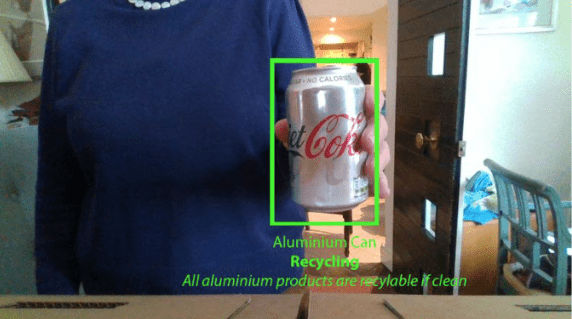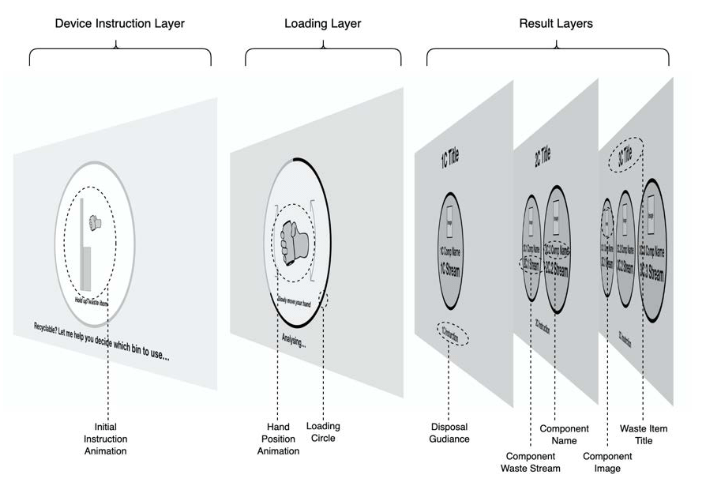Studies have shown that the rate of recycling amongst individuals can be increased by correcting mistakes. Advancements in computer vision have enabled the integration of a classification model, running in real time, with a waste disposal bin. This research discusses the development of a bin that is able to detect waste using computer vision, simultaneously guiding users to dispose of waste items in the relative recycling bins. Through this, increased waste stream purity can be achieved, in addition to greater education of the public in order to improve recycling activity.
A novel algorithm was developed to group product classes without reducing the waste stream purity potential. This was then applied to Recycleye’s WasteNet dataset, and reduced the number of classes by a factor of 8.
Deformation Simulations

These images feature the prototype of the Recycleye Bin
 Recycleye Bin Analytics Portal
Recycleye Bin Analytics Portal
Once a waste item is placed in the Recycleye Bin, the result is recorded by a database as shown above. This portal website analytics page is designed for waste management teams to analyse this data and optimise their Recycleye Bins, and it displays: device engagement, waste stream breakdown, most popular waste disposal items, and most popular bin locations.
UI Concept Development
The UI is designed to guide users to dispose of their waste items correctly whilst also providing educational benefits for future disposal of waste.

The image above displays an overview of how the CV product classification algorithm could be implemented to determine the required waste stream. The example of a coffee cup has been used, and as a coffee cup is usually made of plasticised cardboard which cannot be recycled, the item ends up in landfill.
The first UI concept prototype, as shown in the image above, annotates a video stream which allows
users to conveniently position the waste item in view and identify which recycling bin it belongs to.
Model Implementation
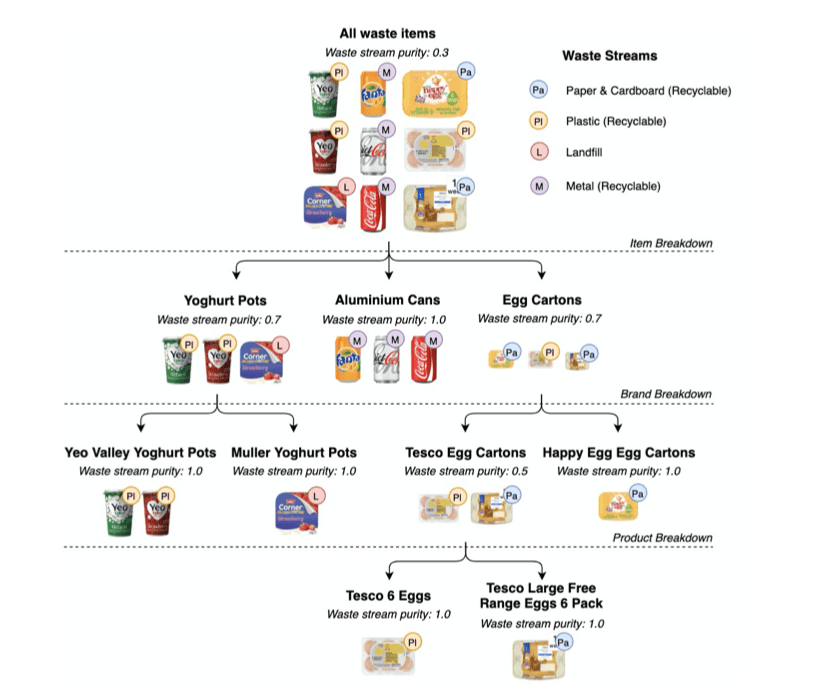
Inspired by the concept of entropy in decision tree training, a novel approach was created to group the unique waste products. This process begins by placing all waste items into a single class. Each product has three sets of information: a generic item name (e.g. egg carton), a brand name (e.g. Tesco) and then a unique product id (equivalent to a barcode). Then, the class is separated into unique items.
Determining Waste Classes

The user interface (UI) has 3 stages: 1) awaiting user, 2) analysis of user’s waste item, 3) provide a result to the user. The image above showcases the set of elements for each stage. The purpose of this research is to provide a user guide on how to dispose of trash items in hand, but it must also provide a guide as to how to use it.
Prototype
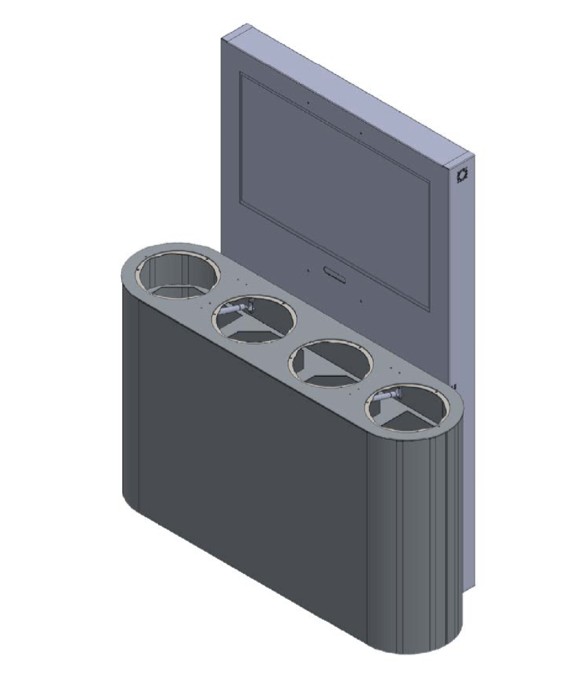
Render of CAD model design
The design of the Recycleye Bin has shown to be a huge success, and a dramatic step in the transition towards a more circular world. Having met all the requirements; most significantly performing accurately and quickly, this device holds significant value to recycling plants and policy makers across the globe. As yet, multiple bin manufacturing plants have reached out to Recycleye for potential partnerships.
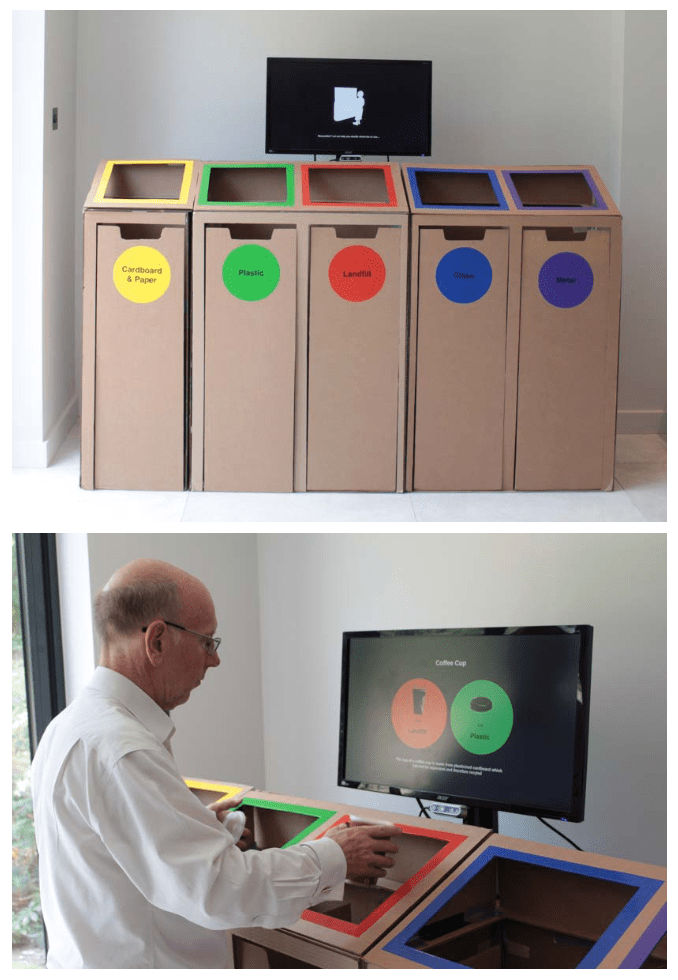
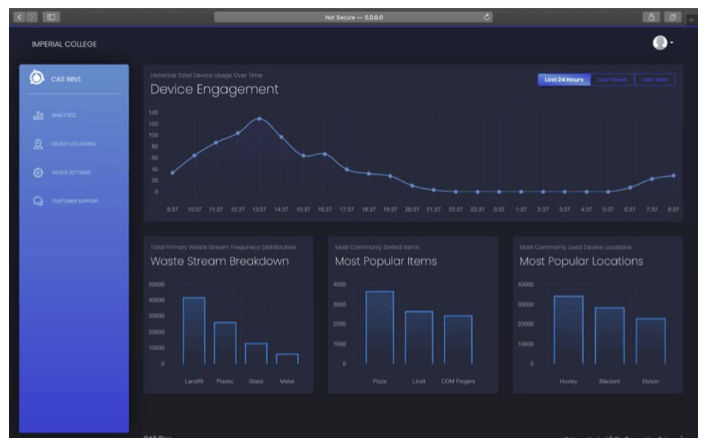 Recycleye Bin Analytics Portal
Recycleye Bin Analytics Portal